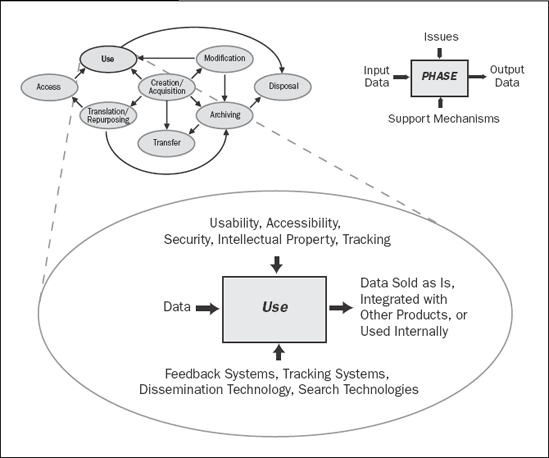4.8. Use
In this phase of the Knowledge Management life cycle, the information is employed for some useful purpose. The range of potential uses for information is virtually unlimited, and depends on the industry and the needs and activities of knowledge workers within the organization. For example, the information may be incorporated into applications for sale or licensed to third parties.
The key issues in the use phase depicted in Exhibit 4.4, include usability, accessibility, security, intellectual property, and tracking. For example, not only must the information be easy to use in the form provided, but it must be easily accessed by those with the appropriate privileges. In addition, use of specific information may be restricted by licensing, moral rights, and other intellectual property controls.
EXHIBIT 4.4. EXHIBIT 4.4

Key support mechanisms in the use phase of the KM life cycle include feedback and tracking systems as well as a variety of dissemination and search technologies. Feedback from automated tracking or direct user feedback is key to improving the processes involved in the KM life cycle. In addition, technology-enabled information dissemination systems, from expert systems and decision support tools, to visualization systems, increase the value of information for specific uses. Similarly, search engines and other technologies allow knowledge workers to navigate ...
Get Essentials of Knowledge Management now with the O’Reilly learning platform.
O’Reilly members experience books, live events, courses curated by job role, and more from O’Reilly and nearly 200 top publishers.

